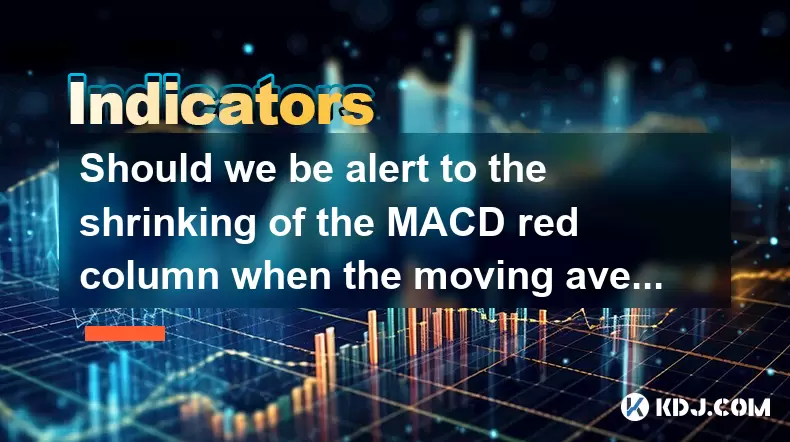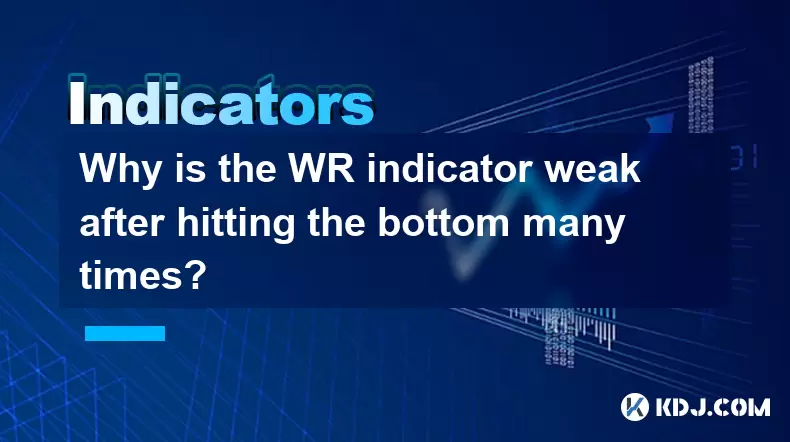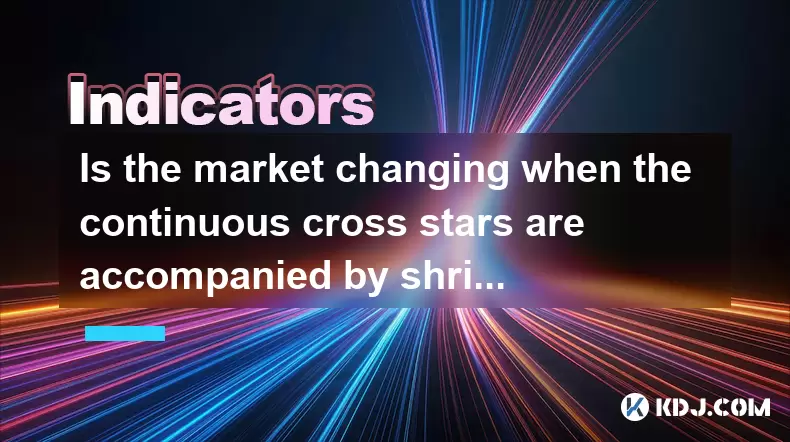-
 Bitcoin
Bitcoin $101,898.5005
-0.75% -
 Ethereum
Ethereum $2,258.1125
-1.07% -
 Tether USDt
Tether USDt $1.0004
0.01% -
 XRP
XRP $2.0178
-2.93% -
 BNB
BNB $624.0243
-1.53% -
 Solana
Solana $134.3298
-0.90% -
 USDC
USDC $0.9999
0.01% -
 TRON
TRON $0.2675
-2.05% -
 Dogecoin
Dogecoin $0.1538
-1.96% -
 Cardano
Cardano $0.5482
-1.11% -
 Hyperliquid
Hyperliquid $35.5636
5.45% -
 Bitcoin Cash
Bitcoin Cash $453.4902
-1.66% -
 Sui
Sui $2.5134
-2.97% -
 UNUS SED LEO
UNUS SED LEO $9.1292
1.77% -
 Chainlink
Chainlink $11.8457
-1.60% -
 Stellar
Stellar $0.2312
-2.73% -
 Avalanche
Avalanche $16.9721
0.29% -
 Toncoin
Toncoin $2.7549
-3.82% -
 Shiba Inu
Shiba Inu $0.0...01081
-1.10% -
 Litecoin
Litecoin $80.8250
-0.71% -
 Hedera
Hedera $0.1374
0.21% -
 Monero
Monero $305.4827
-2.36% -
 Ethena USDe
Ethena USDe $1.0006
0.00% -
 Dai
Dai $1.0000
-0.01% -
 Polkadot
Polkadot $3.2085
-3.12% -
 Bitget Token
Bitget Token $4.0845
-3.13% -
 Uniswap
Uniswap $6.3353
-1.63% -
 Pi
Pi $0.5085
-0.70% -
 Pepe
Pepe $0.0...08913
-3.82% -
 Aave
Aave $232.7090
-0.58%
Is the high opening and low closing and huge volume the next day a trap for more?
A high open followed by a low close with huge volume may signal market manipulation, indicating aggressive buying then profit-taking, often trapping retail traders in volatile crypto markets.
Jun 23, 2025 at 05:07 pm

Understanding High Opening and Low Closing with Huge Volume
When traders observe a high opening followed by a low closing and massive volume the next day, it often raises concerns about whether this is a trap set by larger players in the market. This pattern typically indicates strong volatility within a short period, which can confuse retail investors.
In cryptocurrency trading, price action combined with volume provides insight into market sentiment. A high opening suggests aggressive buying pressure at the start of the session, but the subsequent decline and low close indicate that sellers took control as the session progressed. The huge volume on the following day adds another layer to this scenario — it implies significant participation from large entities or whales.
Why Does This Pattern Occur?
The combination of a high open, low close, and heavy volume the next day may suggest manipulation or strategic positioning by big players. In crypto markets, where liquidity can be uneven and institutional influence is growing, such patterns are not uncommon.
- Whales may push prices up quickly to trigger stop-losses or attract retail buyers.
- After a sharp rise, profit-taking begins, leading to a rapid reversal.
- On the next day, volume surges again, possibly due to panic selling or aggressive accumulation by smart money.
This sequence creates confusion among smaller traders who might misinterpret the movement as either a continuation signal or a reversal opportunity.
Identifying a Potential Trap
To determine if this pattern is indeed a trap for more (i.e., a bear trap), one must look beyond just the candlestick structure. Key indicators and tools can help assess the validity of the move:
- Volume analysis: If the next day's volume is significantly higher than average, especially during a sharp drop, it could mean distribution or capitulation.
- Order book depth: Observing order imbalances around key levels can reveal hidden intentions of large players.
- Market context: Is this happening after a prolonged uptrend or downtrend? A bullish trap is more likely after an extended rally.
A bear trap scenario occurs when the price appears to break down, prompting traders to go short, only for the price to reverse sharply upward afterward. Conversely, a bull trap happens when the price seems to break out, luring buyers before reversing downward.
How to Respond to This Price Action
Traders should avoid making impulsive decisions based solely on candlestick patterns. Instead, they should adopt a structured approach to confirm whether the move is genuine or a potential trap.
- Wait for confirmation candles: Look for follow-through in the next few sessions. If the price continues lower with sustained volume, the breakdown may be real. If it reverses quickly, it could be a trap.
- Use moving averages and trendlines: These tools can help identify whether the trend has truly changed or if the move is noise.
- Monitor support and resistance zones: Significant levels being tested multiple times can offer clues about market intent.
- Check for divergence on momentum indicators: Hidden divergence between price and RSI or MACD can signal weakness or strength ahead of time.
Avoid entering trades immediately after observing this pattern unless you have additional confluence factors supporting your decision.
Case Study: Real Market Example
Let’s take a hypothetical example involving BTC/USDT on a major exchange. Suppose Bitcoin opens the day sharply higher due to positive news, reaching a new local high. However, as the day progresses, profit-taking kicks in, and the price closes near its lows. The next day, volume spikes dramatically as the price drops further.
- On the surface, this looks like a bearish signal.
- But upon closer inspection, order book data shows large buy walls forming below current prices.
- Additionally, the RSI dips into oversold territory without confirming a breakdown.
- Within 24–48 hours, the price rebounds sharply, trapping those who sold aggressively.
This kind of scenario is common in crypto due to its volatile nature and the presence of algorithmic trading bots and whale activity.
Protecting Yourself from Traps
Avoiding traps requires discipline, risk management, and a clear understanding of how institutional players operate in crypto markets.
- Never chase breakouts or breakdowns blindly — wait for confirmation.
- Set tight stop losses based on volatility rather than arbitrary values.
- Use position sizing wisely to prevent overexposure during uncertain setups.
- Keep emotions in check and stick to your trading plan regardless of short-term noise.
By combining technical analysis with sound risk practices, traders can better navigate these deceptive moves and avoid falling into traps laid by larger market participants.
Frequently Asked Questions
What does huge volume after a high open and low close usually signify?
Huge volume following a high open and low close often signals strong conviction from either buyers or sellers. If the price drops the next day with high volume, it may reflect distribution or panic selling. If the price rises, it could indicate aggressive accumulation.
Can I use candlestick patterns alone to detect traps?
Candlestick patterns alone are not sufficient for detecting traps. They should be used in conjunction with volume analysis, momentum indicators, and broader market context to increase accuracy.
Is this pattern more common in certain cryptocurrencies?
Yes, this pattern tends to appear more frequently in low-cap altcoins and highly speculative tokens due to their susceptibility to pump-and-dump schemes and whale manipulation.
How long should I wait for confirmation after seeing this pattern?
Ideally, wait for at least 1–2 additional candlesticks to confirm the direction. Use other tools like moving averages or support/resistance levels to validate the trend before entering a trade.
Disclaimer:info@kdj.com
The information provided is not trading advice. kdj.com does not assume any responsibility for any investments made based on the information provided in this article. Cryptocurrencies are highly volatile and it is highly recommended that you invest with caution after thorough research!
If you believe that the content used on this website infringes your copyright, please contact us immediately (info@kdj.com) and we will delete it promptly.
- Binance, Founder, and ATH: Navigating the Crypto Landscape
- 2025-06-23 18:25:12
- Token Transfers Get a Human Touch: Emotion-Driven Design in Web3
- 2025-06-23 18:45:13
- Shiba Inu: Price Recovery on the Horizon? Buy Orders Suggest Potential Upswing
- 2025-06-23 18:45:13
- BTC Bounce or Bust? Navigating the Bull Market to $982K and Beyond!
- 2025-06-23 19:05:12
- Crypto Analyst Comeback: BTC Bounces Back Amidst Geopolitical Jitters
- 2025-06-23 19:05:12
- XRP Price Under Pressure: Breakout or Breakdown at Pattern Edges?
- 2025-06-23 18:25:12
Related knowledge

Does the second golden cross of MACD above the zero axis represent the continuation of strength?
Jun 23,2025 at 08:21pm
Understanding the MACD IndicatorThe Moving Average Convergence Divergence (MACD) is a widely used technical analysis tool in cryptocurrency trading. It consists of three main components: the MACD line, the signal line, and the histogram. The MACD line is calculated by subtracting the 26-period Exponential Moving Average (EMA) from the 12-period EMA. The...

Is it effective when the DIF line suddenly crosses the zero axis when the volume is shrinking and the market is trading sideways?
Jun 23,2025 at 07:29pm
Understanding the DIF Line in Technical AnalysisThe DIF line, or the Difference Line, is a critical component of the MACD (Moving Average Convergence Divergence) indicator, widely used in technical analysis across cryptocurrency and traditional financial markets. It represents the difference between the 12-period EMA (Exponential Moving Average) and the...

Should we be alert to the shrinking of the MACD red column when the moving average is arranged in a bullish pattern?
Jun 23,2025 at 08:14pm
Understanding the MACD Red Column and Its SignificanceThe Moving Average Convergence Divergence (MACD) is a widely used technical indicator in cryptocurrency trading. It consists of three main components: the MACD line, the signal line, and the MACD histogram (the red column). The red column represents the difference between the MACD line and the signal...

Why is the WR indicator weak after hitting the bottom many times?
Jun 23,2025 at 07:56pm
Understanding the WR Indicator in Cryptocurrency TradingThe Williams %R (WR) indicator is a momentum oscillator used by traders to identify overbought and oversold levels in the market. It ranges from 0 to -100, with readings above -20 considered overbought and below -80 considered oversold. In the context of cryptocurrency trading, where volatility is ...

Is the shrinking cross star after the historical high a signal of topping?
Jun 23,2025 at 05:56pm
Understanding the Shrinking Cross Star PatternIn technical analysis, candlestick patterns are essential tools for traders to predict potential price movements. One such pattern is the shrinking cross star, which appears as a small-bodied candle with long upper and lower shadows, indicating indecision in the market. When this pattern forms after an asset...

Is the market changing when the continuous cross stars are accompanied by shrinking volume?
Jun 23,2025 at 07:42pm
Understanding Continuous Cross Stars in Cryptocurrency ChartsIn the world of cryptocurrency trading, candlestick patterns play a crucial role in predicting price movements. One such pattern is the continuous cross star. This pattern typically appears when there's uncertainty among traders, and it often signals a potential reversal or continuation depend...

Does the second golden cross of MACD above the zero axis represent the continuation of strength?
Jun 23,2025 at 08:21pm
Understanding the MACD IndicatorThe Moving Average Convergence Divergence (MACD) is a widely used technical analysis tool in cryptocurrency trading. It consists of three main components: the MACD line, the signal line, and the histogram. The MACD line is calculated by subtracting the 26-period Exponential Moving Average (EMA) from the 12-period EMA. The...

Is it effective when the DIF line suddenly crosses the zero axis when the volume is shrinking and the market is trading sideways?
Jun 23,2025 at 07:29pm
Understanding the DIF Line in Technical AnalysisThe DIF line, or the Difference Line, is a critical component of the MACD (Moving Average Convergence Divergence) indicator, widely used in technical analysis across cryptocurrency and traditional financial markets. It represents the difference between the 12-period EMA (Exponential Moving Average) and the...

Should we be alert to the shrinking of the MACD red column when the moving average is arranged in a bullish pattern?
Jun 23,2025 at 08:14pm
Understanding the MACD Red Column and Its SignificanceThe Moving Average Convergence Divergence (MACD) is a widely used technical indicator in cryptocurrency trading. It consists of three main components: the MACD line, the signal line, and the MACD histogram (the red column). The red column represents the difference between the MACD line and the signal...

Why is the WR indicator weak after hitting the bottom many times?
Jun 23,2025 at 07:56pm
Understanding the WR Indicator in Cryptocurrency TradingThe Williams %R (WR) indicator is a momentum oscillator used by traders to identify overbought and oversold levels in the market. It ranges from 0 to -100, with readings above -20 considered overbought and below -80 considered oversold. In the context of cryptocurrency trading, where volatility is ...

Is the shrinking cross star after the historical high a signal of topping?
Jun 23,2025 at 05:56pm
Understanding the Shrinking Cross Star PatternIn technical analysis, candlestick patterns are essential tools for traders to predict potential price movements. One such pattern is the shrinking cross star, which appears as a small-bodied candle with long upper and lower shadows, indicating indecision in the market. When this pattern forms after an asset...

Is the market changing when the continuous cross stars are accompanied by shrinking volume?
Jun 23,2025 at 07:42pm
Understanding Continuous Cross Stars in Cryptocurrency ChartsIn the world of cryptocurrency trading, candlestick patterns play a crucial role in predicting price movements. One such pattern is the continuous cross star. This pattern typically appears when there's uncertainty among traders, and it often signals a potential reversal or continuation depend...
See all articles
























































































